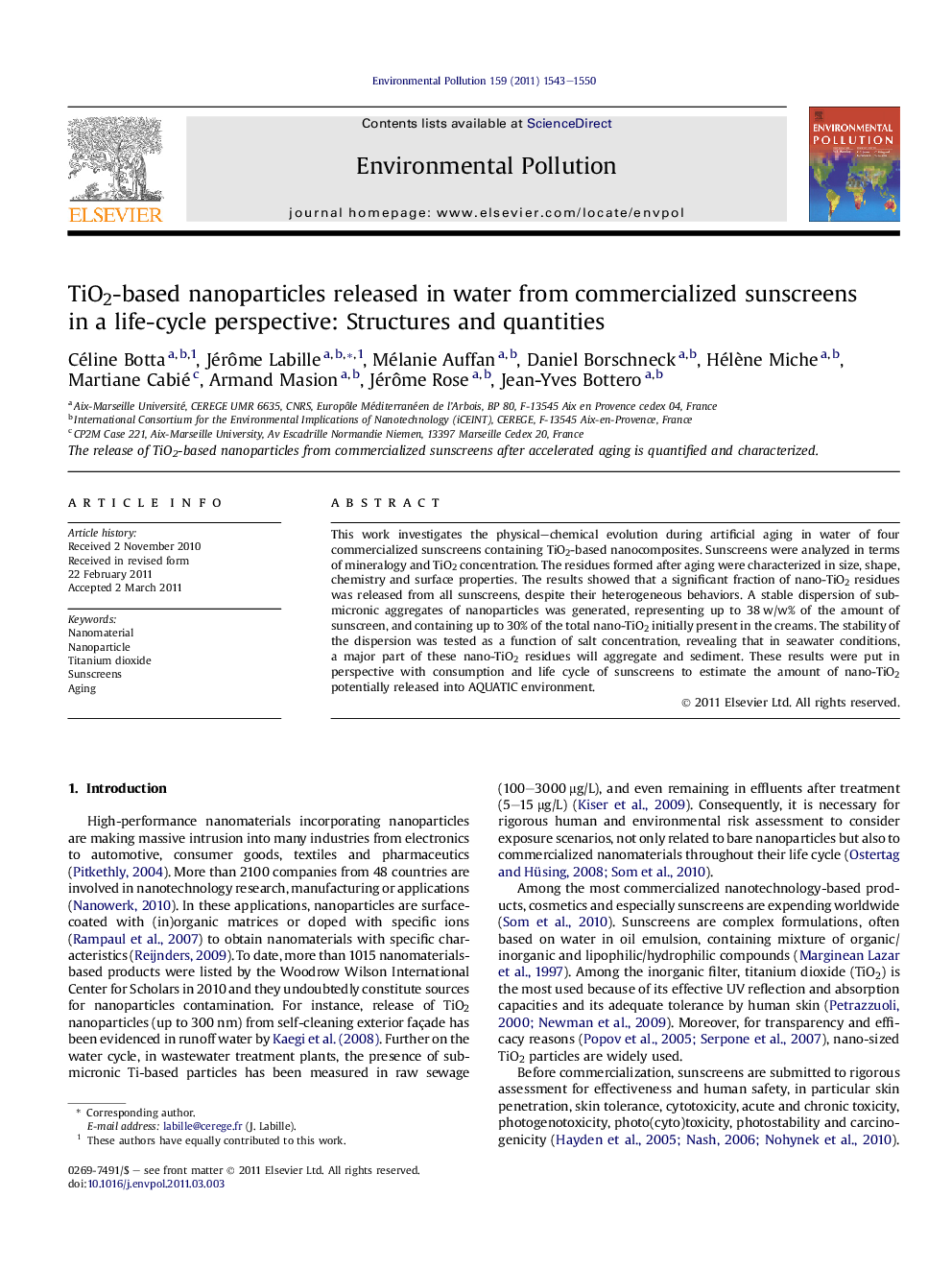| کد مقاله | کد نشریه | سال انتشار | مقاله انگلیسی | نسخه تمام متن |
|---|---|---|---|---|
| 4425501 | 1309106 | 2011 | 8 صفحه PDF | دانلود رایگان |

This work investigates the physical–chemical evolution during artificial aging in water of four commercialized sunscreens containing TiO2-based nanocomposites. Sunscreens were analyzed in terms of mineralogy and TiO2 concentration. The residues formed after aging were characterized in size, shape, chemistry and surface properties. The results showed that a significant fraction of nano-TiO2 residues was released from all sunscreens, despite their heterogeneous behaviors. A stable dispersion of submicronic aggregates of nanoparticles was generated, representing up to 38 w/w% of the amount of sunscreen, and containing up to 30% of the total nano-TiO2 initially present in the creams. The stability of the dispersion was tested as a function of salt concentration, revealing that in seawater conditions, a major part of these nano-TiO2 residues will aggregate and sediment. These results were put in perspective with consumption and life cycle of sunscreens to estimate the amount of nano-TiO2 potentially released into AQUATIC environment.
► Aging of sunscreens containing nano-TiO2 releases micro-residues stable in suspension.
► They represent up to 38 w/w% of the cream and contain up to 30% of the nanoparticles.
► In seawater, a major part of these residues aggregate and settle down with sediment.
Journal: Environmental Pollution - Volume 159, Issue 6, June 2011, Pages 1543–1550